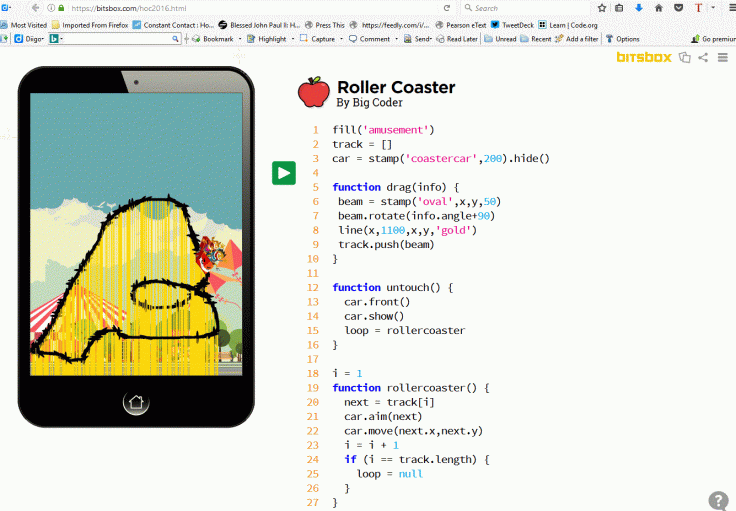I came across this video recently on Code.org that really struck a chord with me. I shared this video with my 5th grade Technology class on the last full day of school to spark a discussion of why coding is so important. The video features some high-profile names including Bill Gates and Mark Zuckerberg. In it, they point out how they all got started with simple code – making a computer ask how old you are, or doing simple math calculations. They acknowledge that coding can be intimidating, just like any new task you haven’t learned how to do yet. I asked my class to raise their hands if they used a device every day and every single hand went up. I then asked them to keep their hands up if they knew how any of the games/apps/software that they used worked. All the hands went down. I asked them why they should know how these things work, and the answers ranged from, “Being able to fix them when things go wrong” to “so we can keep creating cool games and apps.”
These are good responses, but I think the reason goes even deeper. “Because software is becoming the language of the world, not knowing how to code will be akin to being illiterate. Coding, for all intents and purposes, is just that – a language. It is the language behind every network, device, or app we use today – from messaging to online shopping to GPS – and while our students are rather adept when it comes to using these technologies, they are rarely taught how they work. How incredible would it be if we, as teachers, could take this generation of passive content consumers and turn them into a problem-solving, creative-thinking generation of active content producers?” (Murphy, 2017).
The goal of teaching coding to children isn’t training software developers or computer engineers, it’s about teaching kids computational thinking. Computational thinking is a way to problem solve by breaking down big problems into smaller ones. “It allows you to tackle complex problems in efficient ways that operate at huge scale. It involves creating models of the real world with a suitable level of abstraction, and focus on the most pertinent aspects. It helps you go from specific solutions to general ones.” (Crow, 2014). Even if a student isn’t interested in a career in computer science, learning computational thinking skills will prepare them for their futures since “this computational approach is being used across fields such as mechanical engineering, physics, biology, archeology, business, data analytics, and even music.” (Murphy, 2017).
In fact, “computational thinking is a skill that everyone should learn. Even if you never become a professional software engineer, you will benefit from knowing how to think this way. It will help you understand and master technology of all sorts and solve problems in almost any discipline.” (Crow, 2014). To prove that you can teach an old dog new tricks, I took a gander at a coding project on Bitsbox.com. Their hour of code walks you through some very basic commands in javascript to create real apps that you can actually download onto your phone or tablet. After completing a series of short apps that teach you the basic commands, you are encouraged to experiment with your code to see what happens when you make changes. You can then take what you have learned and create your own app, or get more coding projects, such as this roller coaster game. I had fun coding this, and if I can do it, so can you!

References:
Code.org(2013, February 26). What Most Schools Don’t Teach. (Video). Retrieved from https://youtu.be/nKIu9yen5nc
Coding image retrieved from http://mrsthiessenswiki.wikispaces.com/file/view/coding-super-power.jpg/592425732/398×314/coding-super-power.jpg
Crow, D. (2014, February 07). Why every child should learn to code. Retrieved from https://www.theguardian.com/technology/2014/feb/07/year-of-code-dan-crow-songkick
Murphy, A. (2017, May 30). Why We Need to Teach Kids How to Code. Retrieved from http://www.teachercast.net/2017/05/30/teach-kids-to-code/
Rollercoaster (2016). Retrieved from https://Bitsbox.com/more.html


Leave a comment